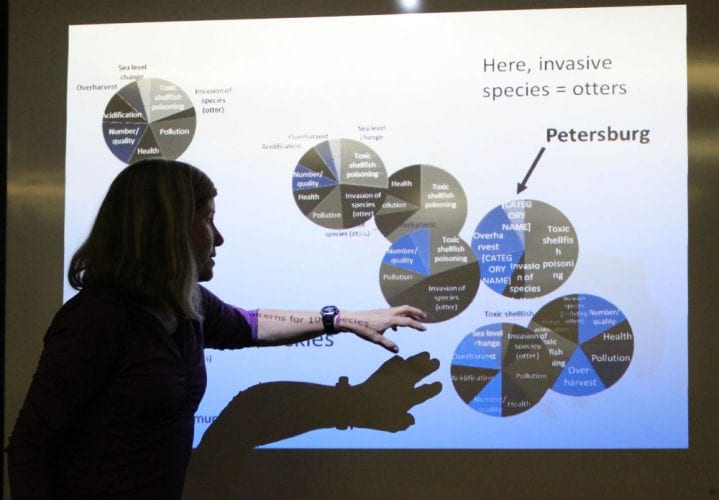
Hydrologist Adelaide Johnson presents preliminary data on shoreline changes and subsistence gathering at a presentation at the Petersburg Indian Association. Photo – Nora Saks.
Shorelines in Southeast Alaska are changing fast. Sea levels are rising everywhere, but here, land is also springing back from under the weight of glaciers as they retreat.
Two scientists from the Forest Service’s Pacific Northwest Research Station teamed up to predict what our coastlines will look like in the future. They’ve also been investigating what those changes mean for coastal species, and for communities that gather them for food.
Hydrologist Adelaide Johnson and social scientist Linda Kruger are on tour this summer, reporting their findings back to the 13 communities they’ve been working with, and keeping the conversation going.
KFSK reporter Nora Saks caught up with the researchers when they were in Petersburg in mid-July to discuss some preliminary, unpublished results from their three year study.
Kruger and Johnson are currently developing two tools they plan to share widely. One is a curriculum guide teachers can use to help students continue the subsistence research and document changes in species. The other is an online map.
You can read a two-pager on their work here: Shore_Geomorphology_Foods_Research_Two_pager_2017
And a summary of their project here: Kruger_and_Johnson_2017









